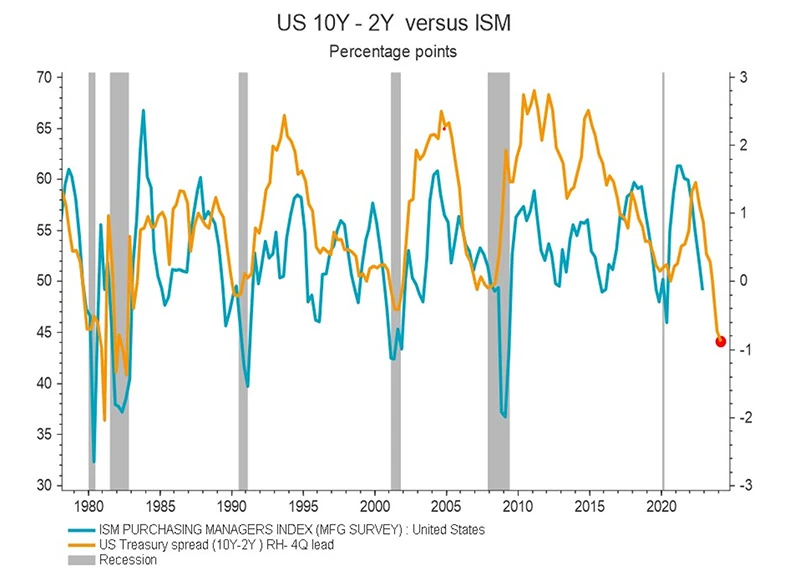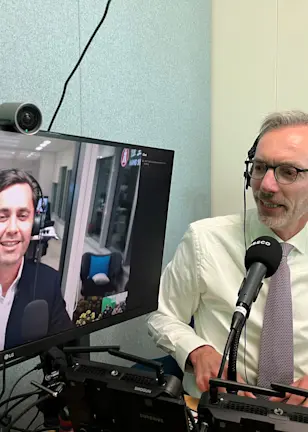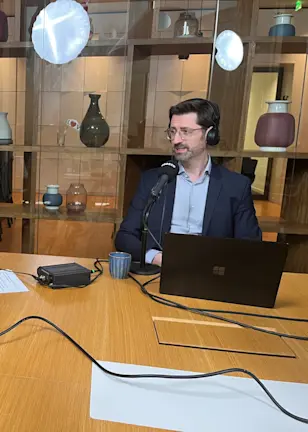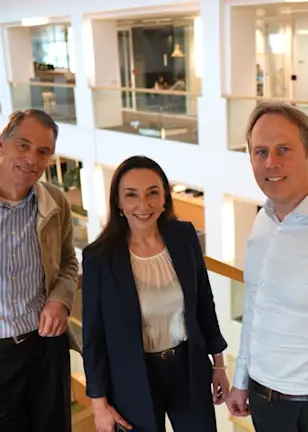He forecasts a potentially scarier ending for the market fairy tale in which the economic porridge is not too hot, or too cold, but just right. While inflation is indeed falling and economic data is improving, the history of recessionary signals may prove too strong to prevent one, he says.
This means Goldilocks is likely to be in for a haircut, prompting the Robeco multi-asset team to take a more cautious position in its portfolios. They remain neutral on global equities and favor more attractively valued high yield bonds as a hedge against extension of the benign market sentiment.
“As global equities are up almost 5% in the year to date in euros, markets in recent months have shrugged off the imminent recession narrative and instead have rooted for a soft landing – or even a no landing – scenario for the global economy,” says Van der Welle, strategist with Robeco Sustainable Multi-Asset Solutions.
“Not only investors, but also seasoned government officials like US Treasury Secretary Janet Yellen have lately been joining the soft landing chorus. A Bloomberg survey showed that searches for ‘soft landing’ have skyrocketed.”
“This pivot in recent months towards the Goldilocks scenario is understandable; the evidence at hand seems to have changed for the better. Clearly the hard data about the US economy such as non-farm payrolls and retail sales have been surprising to the upside and have contrasted with prior, more downbeat soft data.”
Reasons to be cheerful
A more resilient Western consumer, favorable weather and a successful reopening of the Chinese economy after abandoning its zero-Covid policy have also boosted sentiment. “The pace of Western disinflation has been stronger than expected, and as a result, markets have been enjoying a wave of unexpectedly higher economic growth and lower inflation,” Van der Welle says.
“Yet, we might just have seen peak Goldilocks, as markets may have been cheering for the most benign scenario based on the recent evidence at hand, and no bears are coming home yet. However, in doing so they have overlooked what has happened the most often in history in similar economic circumstances.”
“American psychologist Daniel Kahneman has especially highlighted the risks of base rate neglect in decision making. In our view, a haircut awaits for the Goldilocks scenario probabilities reflected in current market pricing.”
Three reasons for a haircut
Van der Welle says there are three reasons why a haircut awaits for our golden-locked heroine: traditional recession indicators, a mismatch between inflation and unemployment, and disinflation occurring in conjunction with positive macro surprises.
“First, reliable recession indicators are strongly contradicting Goldilocks’ endurance on a 12-month horizon,” he says. “In fact, the warning signal from the yield curve has grown even stronger in the year to date, as the inversion of the 2-year/10-year curve has deepened on the back of the recent upward repricing of the Fed’s hiking path to a terminal policy rate of 5.4%.”
“US yield curve inversion has rarely raised a false flag when it comes to calling a recession over the past four decades, with a notable exception in 1998. The bond market tells us that a Fed that is determined to bring inflation back to target by raising real policy rates well into positive territory will ultimately create headwinds against aggregate demand.”

Inversion of the yield curve is a traditional indicator of an impending recession. Source: Refinitiv Datastream, Robeco
“Timing is of the essence here, as the lags between the yield curve inversion signal and the subsequent economic fallout are highly variable, with the potential to wrongfoot both macro bulls and bears post-inversion. For instance, when the yield curve inverted in August 2005, it took still 29 months before the onset of an NBER recession in 2008, even though the average lag is 16 months.”
最新のインサイトを受け取る
投資に関する最新情報や専門家の分析を盛り込んだニュースレター(英文)を定期的にお届けします。
Inflation versus unemployment
Secondly, there is the mismatch between rising inflation and falling unemployment. “While there is much to cheer about the resilience of the consumer on the back of continuing tight labor markets, a cyclical low in unemployment rates as we observe today, with US unemployment at 3.4%, is a contrarian signal for future economic activity,” Van der Welle says.
“Whenever the US unemployment rate drops below 5% and inflation edges above 4%, a recession ensues in the subsequent two years 100% of the time. Such a strong base rate leaves little room for complacency about the risks facing the US medium-term growth outlook.”
“This view can be further substantiated by looking at the steep drop in housing market sentiment, which serves as a leading indicator for US unemployment. As the decision to buy a house is strongly determined by perceived future job security, the deterioration in buyer sentiment signals that a significant turn in the labor market might be ahead.”
Highly unstable equilibrium
The third reason for a peak Goldilocks scenario is the recent episode of stronger-than-expected disinflation in conjunction with positive macro surprises. “This represents a highly unstable equilibrium,” Van der Welle says.
“While the disinflation process itself might not be at risk, the pace of disinflation could slow – inflation surprise indices edged higher already last month – and take some shine off the Goldilocks appeal.”
“Economic momentum has improved in advanced economies, with the global PMI above 50 again (signaling economic expansion) for the first time in six months. While commodity prices have declined by 3.3% in the year to date, a continued recovery in manufacturing activity led by Asia could slow the pace of headline disinflation.”
Inflation is still up
Meanwhile, the much-feared core PCE inflation has increased in recent months, and the data shows that almost half of its rise is still related to the supply side of the economy.
“Although supply chain problems have notably eased, another strong positive supply side shock through investments would be needed to remove sticky inflation elements from several economic sectors,” Van der Welle says.
“All in all, inflation might prove to be stickier until a recession enters the scene, as this phase of the business cycle typically triggers strong disinflation. In the meantime, central banks could feel they have to do more to bring down aggregate demand, which implies a larger drag on the economy and financial markets further down the road.”
重要事項
当資料は情報提供を目的として、Robeco Institutional Asset Management B.V.が作成した英文資料、もしくはその英文資料をロベコ・ジャパン株式会社が翻訳したものです。資料中の個別の金融商品の売買の勧誘や推奨等を目的とするものではありません。記載された情報は十分信頼できるものであると考えておりますが、その正確性、完全性を保証するものではありません。意見や見通しはあくまで作成日における弊社の判断に基づくものであり、今後予告なしに変更されることがあります。運用状況、市場動向、意見等は、過去の一時点あるいは過去の一定期間についてのものであり、過去の実績は将来の運用成果を保証または示唆するものではありません。また、記載された投資方針・戦略等は全ての投資家の皆様に適合するとは限りません。当資料は法律、税務、会計面での助言の提供を意図するものではありません。 ご契約に際しては、必要に応じ専門家にご相談の上、最終的なご判断はお客様ご自身でなさるようお願い致します。 運用を行う資産の評価額は、組入有価証券等の価格、金融市場の相場や金利等の変動、及び組入有価証券の発行体の財務状況による信用力等の影響を受けて変動します。また、外貨建資産に投資する場合は為替変動の影響も受けます。運用によって生じた損益は、全て投資家の皆様に帰属します。したがって投資元本や一定の運用成果が保証されているものではなく、投資元本を上回る損失を被ることがあります。弊社が行う金融商品取引業に係る手数料または報酬は、締結される契約の種類や契約資産額により異なるため、当資料において記載せず別途ご提示させて頂く場合があります。具体的な手数料または報酬の金額・計算方法につきましては弊社担当者へお問合せください。 当資料及び記載されている情報、商品に関する権利は弊社に帰属します。したがって、弊社の書面による同意なくしてその全部もしくは一部を複製またはその他の方法で配布することはご遠慮ください。 商号等: ロベコ・ジャパン株式会社 金融商品取引業者 関東財務局長(金商)第2780号 加入協会: 一般社団法人 日本投資顧問業協会


















